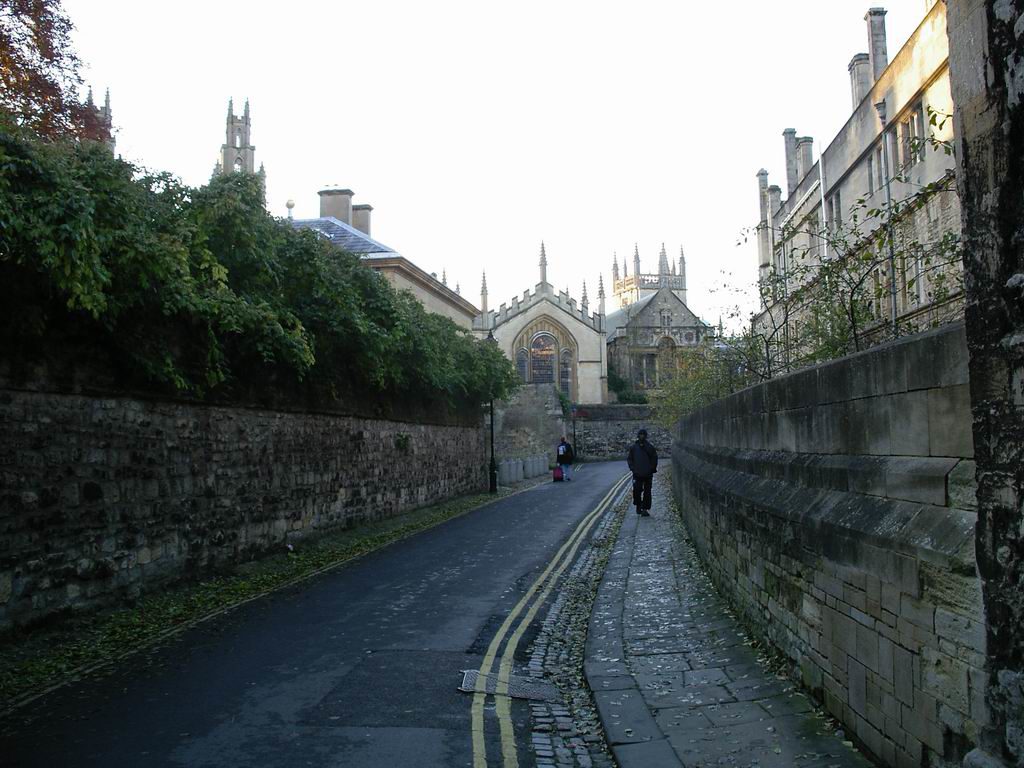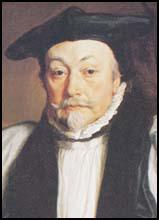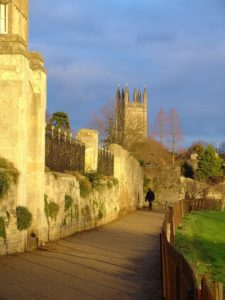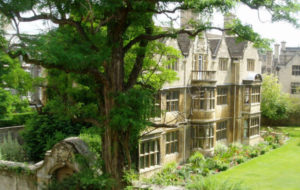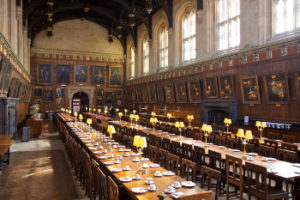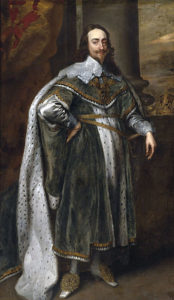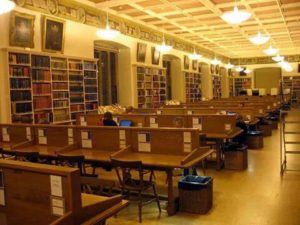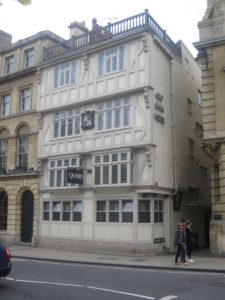Last night I walked back from a gorgeously funny production of Love’s Labours Lost at Wadham College. The moon was almost full (a bomber’s moon) and it seemed to be stuck in the towers of All Souls College.
Oxford is amazingly romantic at night. The day trippers have left and it is the haunt of students, Oxonians, the homeless (and hoards of teenaged foreign language students).
Romantic . . . and ghostly.
So (rather than do what I should be doing and finish my latest novel) I thought I’d share some of Oxford’s most famous ghost stories.
Wadham College
We go to the College every year to see Shakespeare performed in the lovely gardens. I’ve never seen the resident ghost, but here’s the story:
Wadham’s ghost has been observed over the years by witnesses of veracity: one head porter and two scouts. Apparently they’ve observed a white figure in robes – possibly a priest – walking from the chapel door, across first quad and into the hall, across the hall to vanish just in front of High Table. I understand that this part of the college was built over the site of an old Augustinian Priory.
And the former Head-Steward, Mr Maurice Howes, apparently complained on a regular basis of hearing footsteps late at night from his office. They seemed to enter the hall, but never left it.Queen’s Lane
My favourite place at night is spooky Queen’s Lane, where the cavaliers rode through on their way to do battle with Cromwell’s army. Sometimes, when it is deserted, particularly on a windy autumn evening, you can hear the ghostly hoofbeats…
St John’s College
Archbishop of Canterbury, William Laud, was beheaded in 1645, after being impeached by the Long Parliament .
(The Long Parliament lasted from 1640 until 1660, and passed, among other acts, the first Habeas Corpus Act – which as a lawyer gets me quite excited, because a Writ of Habeas Corpus provides that the Crown must “certify the true cause” of imprisonment. It’s one of the fundamentals of English and Australian criminal law).
Here’s a particularly horrible depiction of his execution 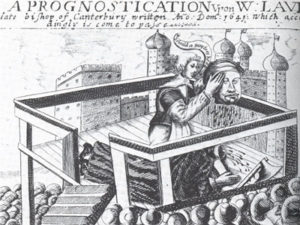
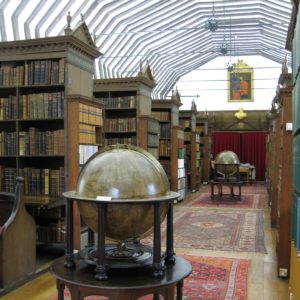
Here’s the library where he plays football with his head. Laud was educated at St Johns, and his bones are buried under the alter of the chapel. His ghost has been known to disrupt students in St John’s College Library.
Some say he pulls his head from his neck and rolls it at people, others say he kicks it along the floor with a candle in his hand. And apparently he drifts 20mm above the ground, because the pavement has worn down since his death.
Now those who read Harry Potter will recognise the similarity to Nearly Headless Nick. But Laud looks nothing like John Cleese. In fact, I don’t think the Archbishop looks like the ghostly sort, myself. I certainly don’t see him playing football with his head. (I’ve always seen him as an honourable man, on the wrong side of history.)
Merton College
Merton College library has the ghost of poor Colonel Francis Windebank, shot in 1645 by his own side.
It’s a sad story. He was a young, newly married colonel in the Royalist army in the Civil War and was appointed governor of Bletchingdon Park, near Oxford. In April 1645 he invited his young wife and friends for a ball at the house to raise their spirits (not the ghostly kind). A Parliamentarian spy may have been present, as during the ball the house came under attack by Cromwell’s forces.
The house was well protected, and probably could have withstood the attack, but Windebank surrendered immediately. It is likely that he did so in order to protect the lives of his wife and friends.
He went to explain to the King in Oxford (where the King had his headquarters). His excuses were not accepted and he was tried by a Royalist court-martial for failing to protect Bletchingdon Park. They took just three hours to find him guilty and sentence him to death by firing squad.
His execution took place against the length of town wall abutting Merton College. Windebank bared his chest to the muskets and exclaimed “God Save the King.”
Windebank’s ghost haunts the site of his execution at Dead Man’s Walk, which abuts Merton College. He’s a well known Oxford ghost, and is thought to haunt because of his lingering feeling of injustice at being executed for what he considered a chivalrous action.
It is also said that he walks around on his knees. Rational thinkers (?) say that it is more likely that he is walking on the original (lower) ground level of the seventeenth century.
I couldn’t find a picture of poor Francis, but here’s a generic Royalist Cavalier, so if you’re wandering along Dead Man’s Walk, you’ll know what to look for: 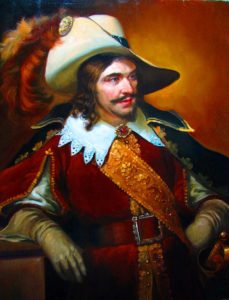
University College
The wonderfully named Obediah Walker (the ghost who walks – get it!) was the Catholic Master of University College.
He tried to follow James I into exile in France but was captured and imprisoned for ten years. When released he was a broken man and his ghost supposedly haunts Staircase VIII (where the Master’s residence used to be). I could find no photograph of Obediah, but here is the place where Walker walks…
Christ Church College
Oxford was a Royalist stronghold during the English Civil War. The King made the Christ Church College Deanery his palace and held Parliament in its Great Hall.
The spirit of King Charles I has been known to appear in the grounds of Christ Church College and in the Great Hall, sometimes with his head, sometimes without.
Apparently he also appears in the Bodleian Library. While in Oxford, the King was denied leave to take books from the Bodleian in 1645. He has been seen at night running around in the upper reading room pulling books from the shelves reading one line and placing them back in an endless game of fortune telling, again sometimes with and sometimes without his head.
And that is NOT why I always do my study in the Lower Reading Room.
Magpie Lane
The former bank that stands on the corner of Magpie Lane (now the Quad) is reputedly haunted by the ghost of Prudence, who died of a broken heart when her Cavalier lover ran away.
I’ve walked down that little lane many times, but Dear Prudence has never come out to play (you have to be a Beatles fan to get it!)

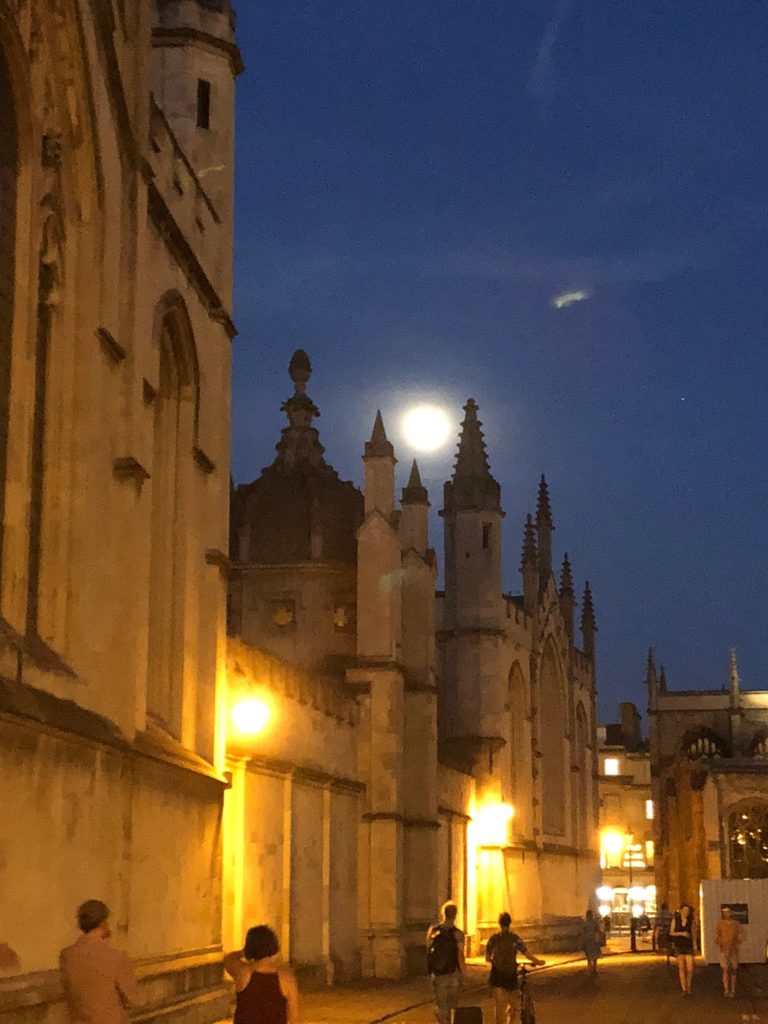
![By Miguelacbt1987 [Public domain], from Wikimedia Commons](https://deborahburrows.com.au/wp-content/uploads/2018/07/800px-Wadham_4-300x225.jpg)
